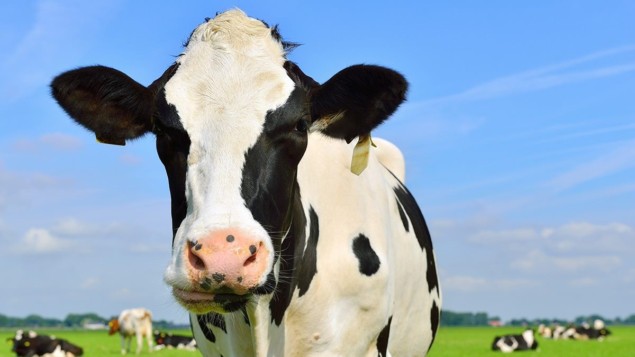
Are you one of those people who tracks all their activities with a smart watch to ensure that they are getting enough exercise. I am borderline obsessive in that way and cows might be next – if researchers at Southwest Jiaotong University in China have their way. Zutao Zhang and colleagues have developed a wearable smart device for cows that harvests kinetic energy from the creatures’ smallest motions. This is converted to electrical energy that is stored in a battery, which powers “smart ranch technology” sensors.
According to Zhang, information that could be gathered by the sensors include oxygen concentration, air temperature and humidity, amount of exercise and more. Data would be uploaded from the field by 5G networks and could improve the world’s food systems, say the researchers.
Zhang says that the energy generation system has also been tested on humans, and a light jog was enough to run a temperature sensor.
“Kinetic energy is everywhere in the environment—leaves swaying in the wind, the movement of people and animals, the undulation of waves, the rotation of the earth—these phenomena all contain a lot of kinetic energy,” says Zhang, “We shouldn’t let this energy go to waste.”
The research is described in iScience.
Topological beehives
From cows to bees, researchers in the US have investigated how honey bees modify the structure of their honeycombs to fit them into cavities and other constrained areas. Nominally, honeycombs have a hexagonal lattice. However, they are often built within enclosed spaces with geometrical constraints. Bees adapt to these constraints by introducing non-regular hexagons and topological defects to their honeycombs.
To understood how bees do this, Francisco López Jiménez and Orit Peleg of the University of Colorado and colleagues have used 3D printing to create a collection of “starter frames” that contain specific geometric frustrations for honeycomb-building bees.
The team says that it found “clear evidence” that bees use certain recurring patterns in response to specific frustrations. They also modelled and replicated the bees’ strategy using a simulated annealing process. Because honeycomb lattices occur elsewhere in nature, most notably in graphene, the team hopes that its study could shed light on a wide range of structures and materials.
Their research is described in Proceedings of the National Academy of Sciences .
